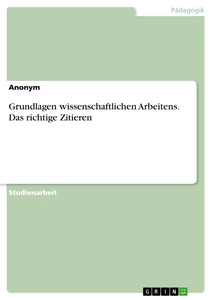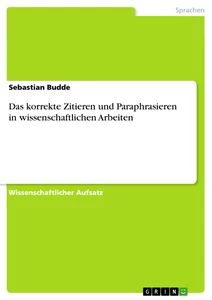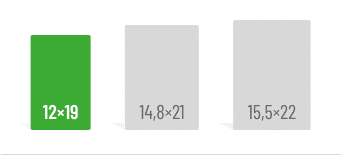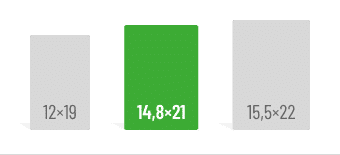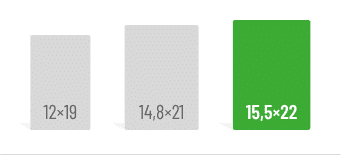First things first:
- Citation is a must.
- There are different citation methods prescribed by the subject and institute.
Right from your first essay, in position papers, and especially in your final theses, the cornerstone of academic work is put to the test: citation. But not all citations are created equal. There are various ways to incorporate quotes, as well as different citation styles you can use. This article serves as a guide through the methodology, ensuring you master proper citation in your next academic project.
Direct vs. Indirect Quotes
Direct Quotes
Direct quotations are verbatim excerpts taken from other works, which is why they’re also referred to as literal quotations. To properly credit the source, it’s essential to clearly indicate the quotation as such. This is done using quotation marks. Place opening quotation marks at the beginning of the excerpt (“) and closing quotation marks at the end (”).
If part of a sentence is omitted to shorten the quotation, this is indicated with square brackets containing three dots (“The […] mouse ran away from the cat.”). This technique is particularly useful when the omitted section is irrelevant to the intended meaning, making it easier for readers to grasp the core of the quote
Conversely, it may be that the quotation omits an important description that is not clear to the reader. In this case, it is possible to add information to a quotation. In this case, the added word that is missing in the original or is in a different place would be written in square brackets (“The [weiße] mouse ran away from the cat.”). If you include a direct quote in the text, you can either note this with colons or insert the quote into your own sentence. Here are two examples:
Alternative 1: John Doe concludes from this: “The […] Mouse ran away from the cat.”
Alternative 2: “The […] Mouse ran away from the cat” is the conclusion that Mustermann draws at this point.
If grammatical adjustments are necessary when inserting them into your own sentence, you can also mark them with square brackets:
Original: “He saw a chalk-pale woman.”
In the sentence: The sight of “a chalk-pale woman” terrifies him.
Direct quotations are especially useful when the exact wording of a passage is crucial for your argument. This is often the case with definitions by other authors that you want to adopt or when statements are challenging to rephrase in your own words. However, a direct quotation should never stand alone without commentary. It’s essential to engage with the quotation, highlighting its relevance to your work and actively integrating it into your argument.
You might also be interested in these articles:
Indirect Quotes
In the case of indirect quotation, the wording of the source is not used, but the content is formulated in one’s own words. Above all, the meaning of the source is adopted, but processed in a separate sentence. The source must also be cited here. As a rule, the abbreviation “cf.” is used to make it clear to the reader that one is only referring to this source in the sense. An indirect quotation is particularly useful if you summarize a very long section and reduce it to the most relevant features.
The correct reference: German citation vs. Harvard citation
Direct and indirect quotations have one thing in common: for legal reasons, reference must always be made to the original source. In addition to many others (e.g. MLA, APA, Chicago Manual of Style, etc.), there are two common citation styles: the German and the Harvard citation style. In principle, both are correct. However, each discipline has its own ideas on how to cite in the scientific papers. Therefore, it is always important to check the website of the department. As a rule, there is a “style sheet” or similar, where all relevant information for citation is listed.
German citation style
The German citation style is characterized by the use of footnotes. After each direct or indirect quotation, a footnote is added to reference the source. For example, the previously invented sentence would look like this: “The […] mouse ran away from the cat.”[1]
The exact content of the footnote often depends on the academic discipline, but it must always allow the source to be identified without error. Essential details include the author’s name, title, edition, year, and publisher. Additionally, the exact page or page range must be specified. Footnotes always end with a period. The numbering system of footnotes helps readers navigate the text efficiently. For indirect quotations, the abbreviation “cf.” is used at the beginning to indicate that the source is being referenced for its meaning rather than exact wording.
Harvard citation style
Unlike the German citation style, the Harvard style eliminates the need for footnotes. Instead, it uses parentheses directly within the text, placed after direct or indirect quotations, to reference the source. While the details provided are less extensive, full citation information can be found in the bibliography. For example, the sentence would look like this: “The […] mouse ran away from the cat.” (Mustermann, 2021, p. 23). The necessary details include the author’s last name, the year of publication, and the page number. For indirect quotations, the format remains identical, and there is no need to add “cf.” before the author’s name.
Tips
Citation is the backbone of all academic writing, and there’s no way around it. That’s why it’s crucial to thoroughly understand the topic and quickly learn the rules specific to your field of study. Proper citation from the start saves you the hassle of revisiting and correcting all references at the end of your work. For longer assignments, it’s especially advisable to fill in footnotes or in-text citations completely as you go, including the exact page numbers. With 80 footnotes in a text, flipping back through sources to find page numbers later can be a daunting task. It’s also often helpful to visit your professor’s office hours for guidance on the specific citation requirements for the assignment. Addressing their preferences early on can save time and may even positively impact your grade.
Ultimately, citation is far less daunting than it seems — once you get the hang of it, the process becomes almost second nature.
[1] Mustermann, Max (2021): Katz und Maus, 1st edition, Berlin: Kein-Verlag, p. 23.
Our recommendations:
Do you like our magazine? Then sign up for our GRIN newsletter now!




